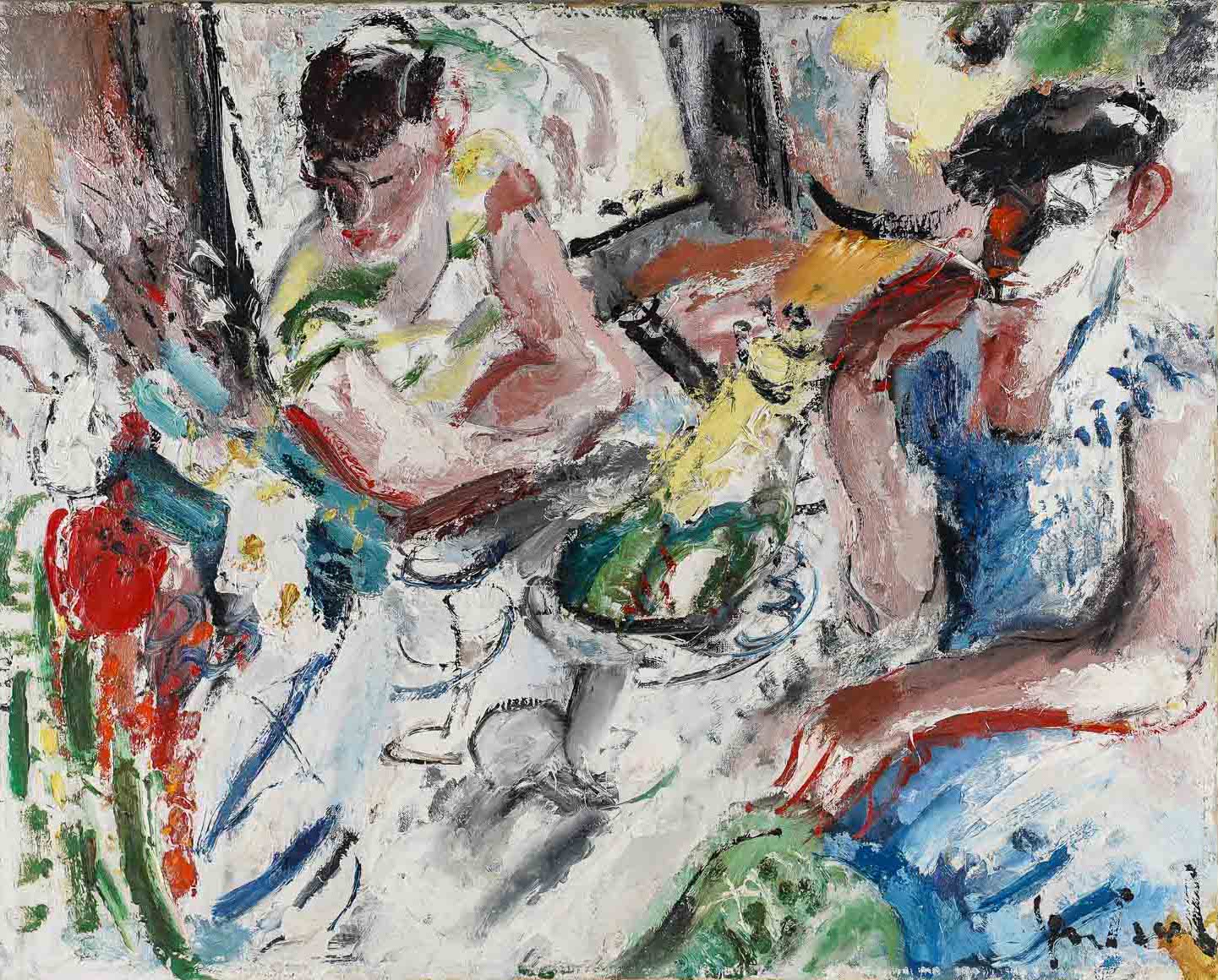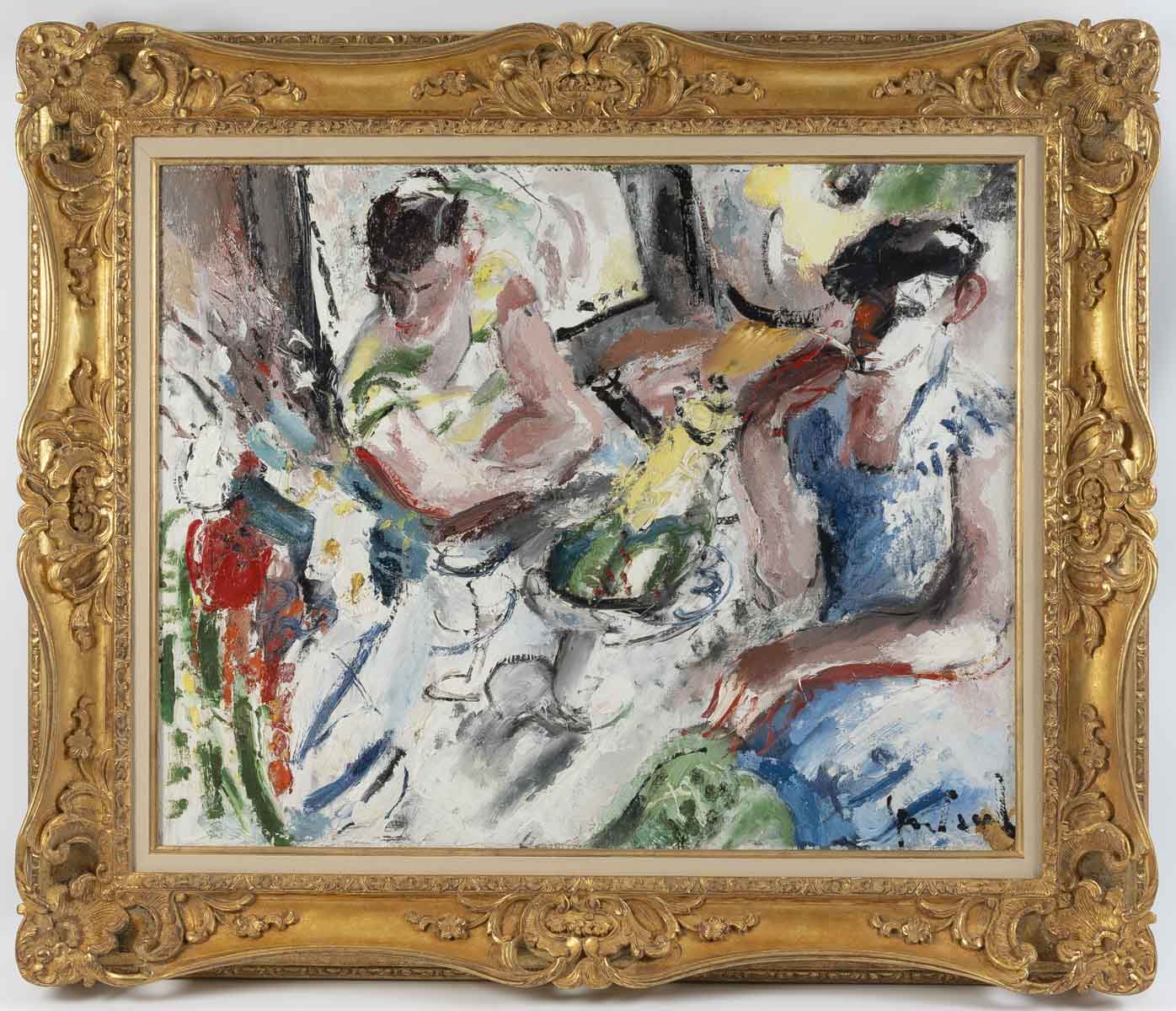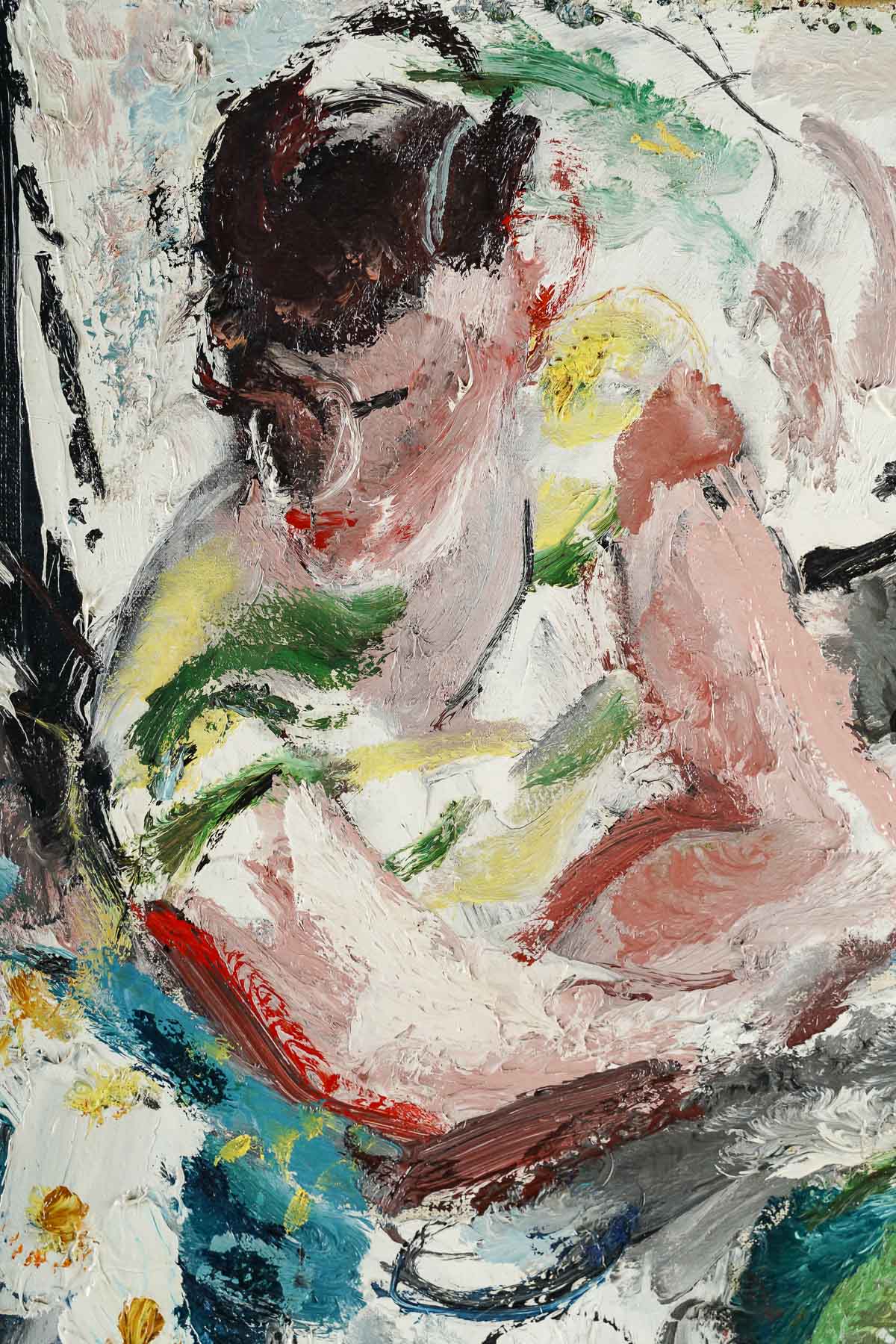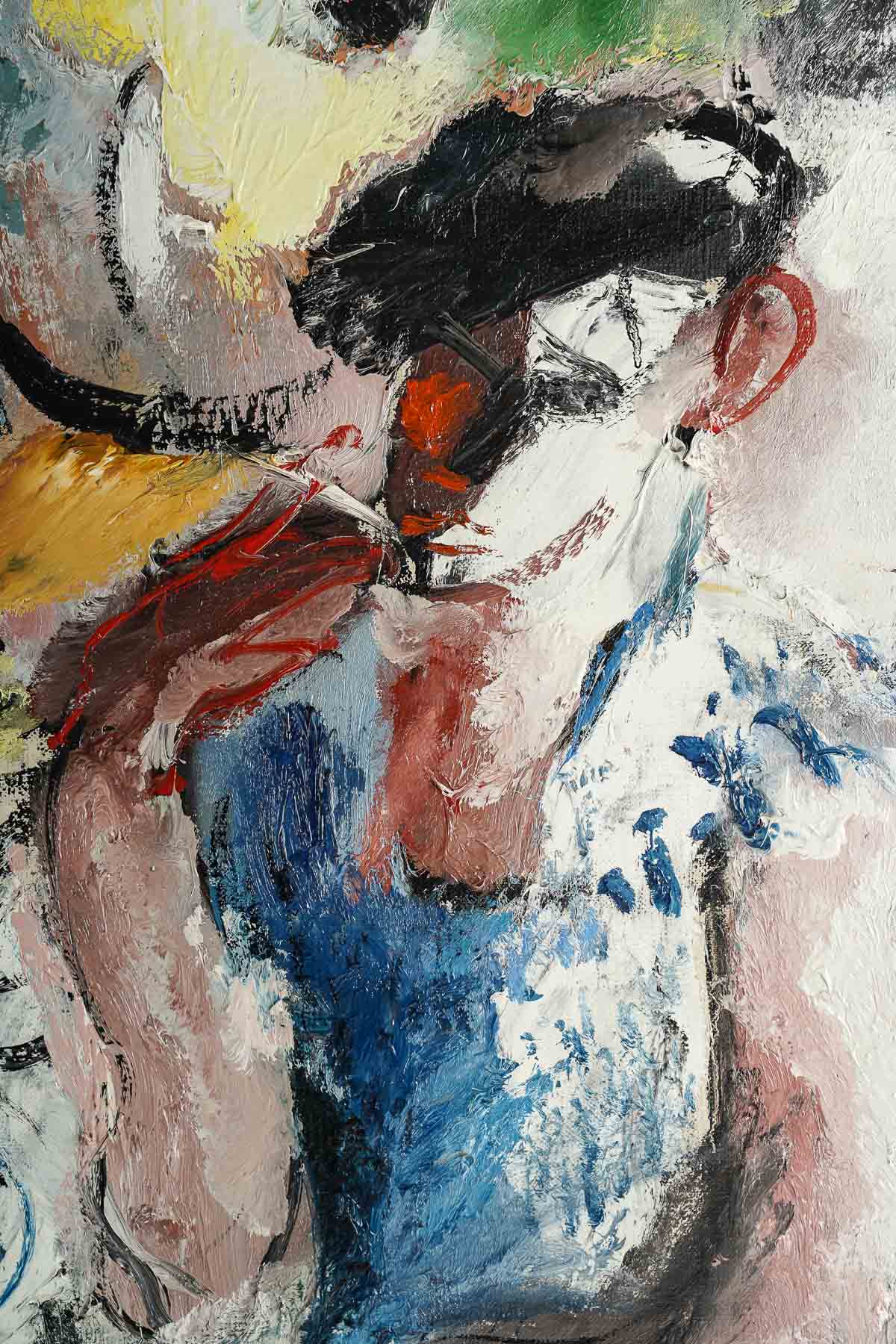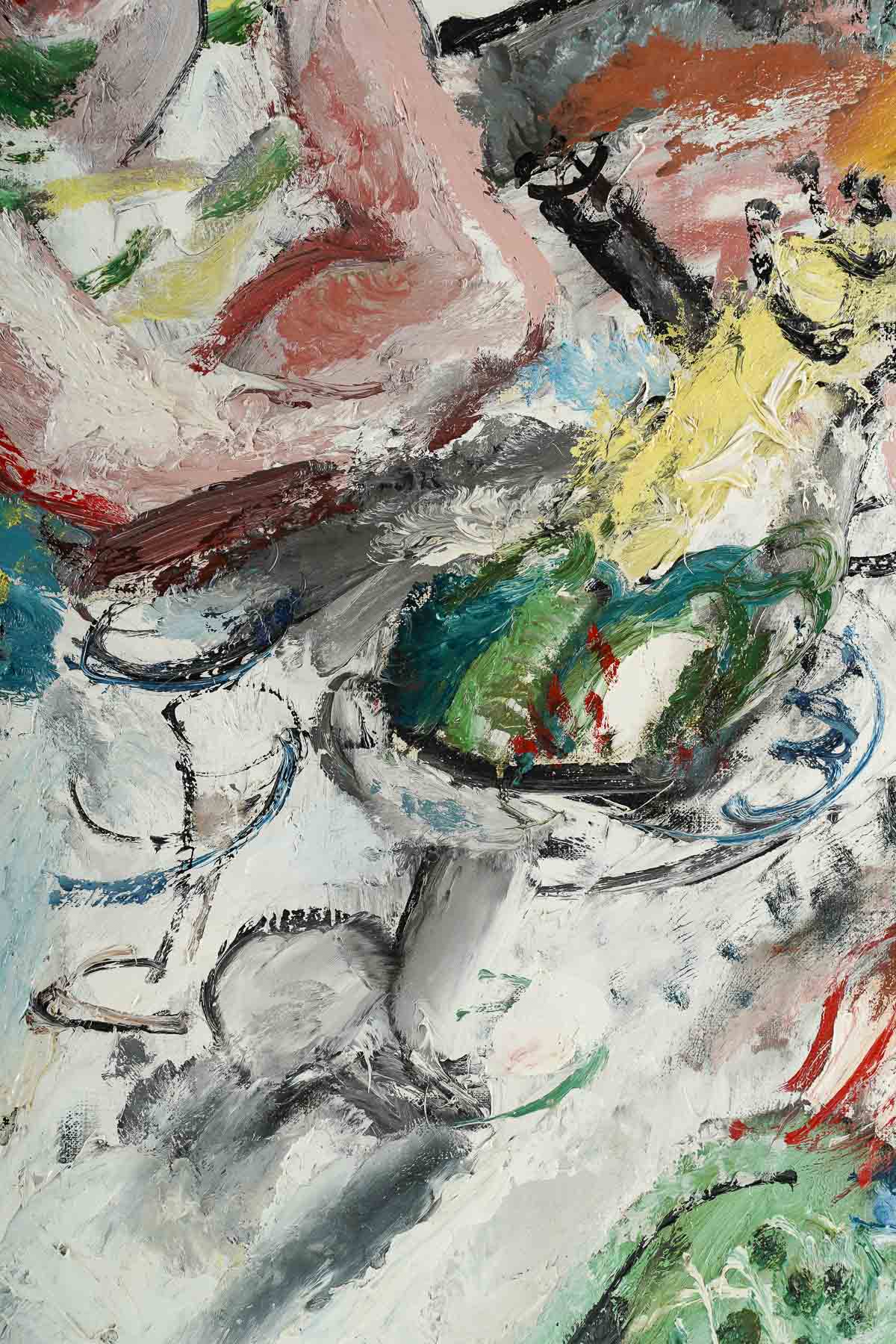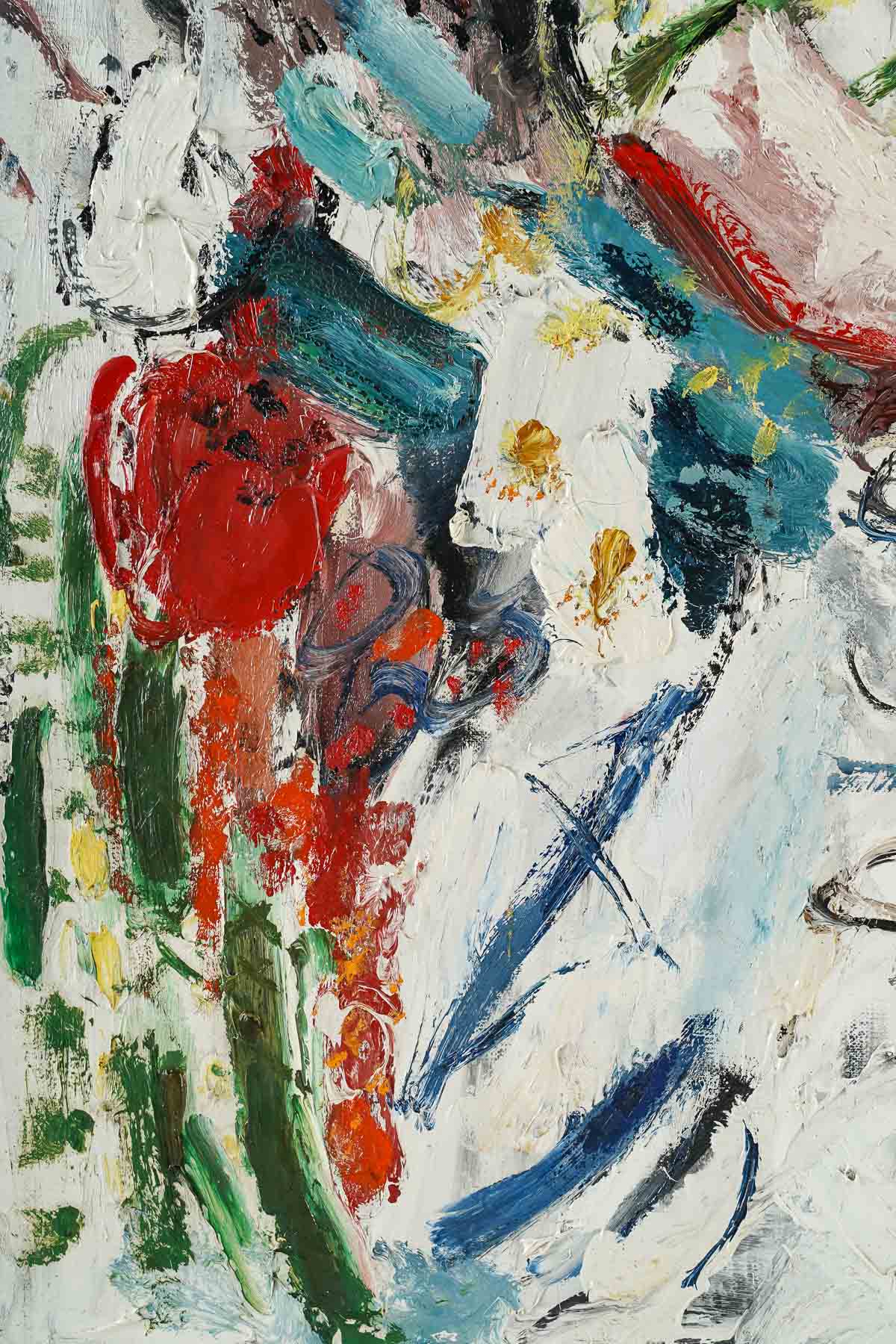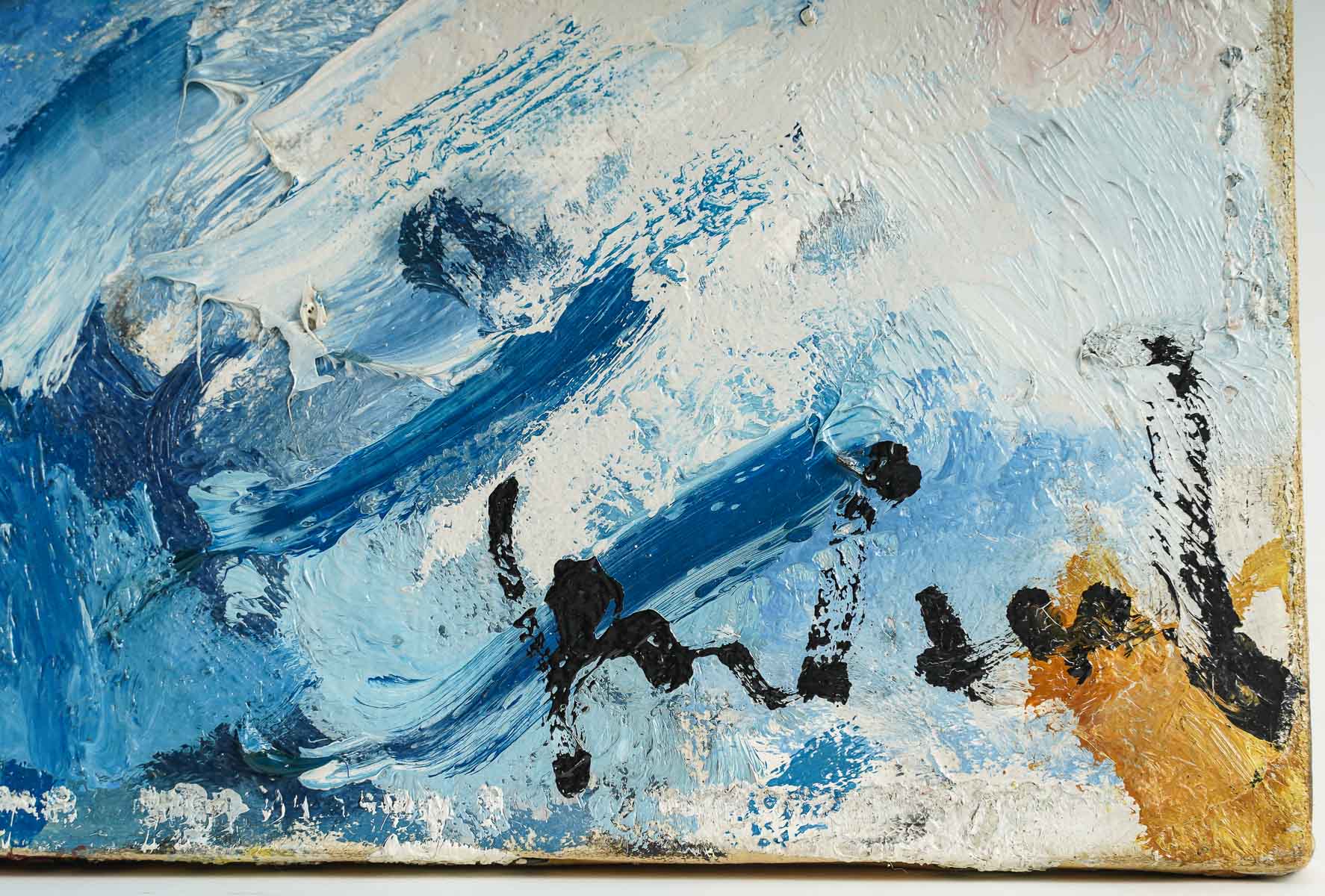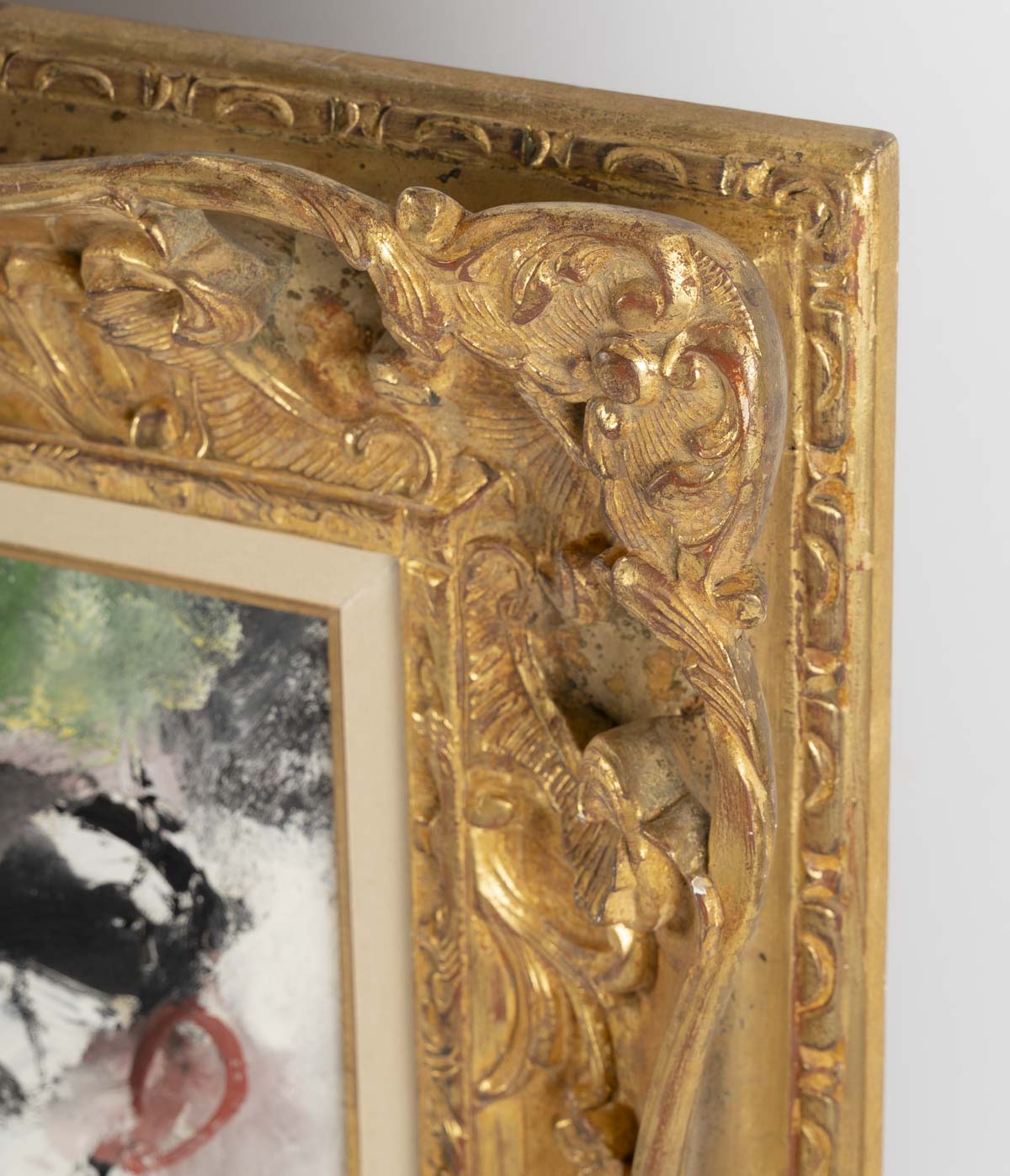Eugène Gen Paul
An expressionist work by Gen Paul, circa 1927, depicting a couple at a table enjoying a bottle of champagne. A cheerful, lively work with shimmering colors and a twirling touch.
Oil on canvas
Signed lower right and on back.
Dimensions: 65 x 81 cm
With frame: 87.5 x 104 cm
Price : sold
The lively spirit of 1925-1930, Gen Paul’s best years
Between abstraction and figuration, in the 20s Gen Paul painted above all what he loved. Gen Paul loves life, and our painting is a testament to that.
Gen Paul is eager for life and movement, snatching up faces or moments that he then nervously throws onto his canvas.
GEN PAUL one of the masters of French Expressionism,
Gen Paul represents a picture which, if it seems sketchy, is in every way accomplished. He uses extraordinary technical virtuosity.
White is an important element. Brightly colored stains splash across it. The painter completes his fireworks display with a few black brushstrokes. An economy of means that denotes his artistic talent.
Biography
GEN PAUL was born at 96, rue Lepic, in a house that Van Gogh depicted in one of his paintings. His mother was an embroiderer and his father a café musician. Being born on rue Lepic was a good sign, and GEN PAUL hasn’t changed neighborhoods since. Memories for the eyes, the head and the palette. Leaving the rue Lepic communale in the evening, he was already fascinated by this strange, elegant, wonderfully-dressed dwarf who then had his studio nearby, on rue Tourlaque: Toulouse Lautrec. He knew the Bonnot gang, La Goulue and handcarts.
A painter born in Montmartre and living in Montmartre is first and foremost a painter, and Gen Paul didn’t spend his life painting the Sacré Coeur, the Moulin Rouge and rue Lepic.
He began to paint at an early age. His apprenticeship was original: as an interior decorator’s apprentice, he looked around him in rich apartments.
Passionate about painting and eager for knowledge, he observed the works collected by art lovers, wherever his work took him. In addition, he learns about human anatomy by getting to know surgeons and accompanying them to operating rooms. He completed his training during the few years he attended the Ecole des Beaux-Arts in Paris.
In 1913, he volunteered for the front and was wounded. A year later, a second injury led to the amputation of his right leg. Back in Paris in 1916, he began to paint. His first oil painting – the Moulin de la Galette seen from his window – dates from 1916. From then on, Eugène Paul began his career as a painter. He painted many views of Paris to satisfy demand.
He signed his first canvas “GEN-PAUL” in 1918. In 1920, he exhibited at the Salon d’Automne, and remained faithful to this institution, as well as to the Salon des Indépendants. He travels to Spain and confronts the masterpieces of the masters: Goya, El Greco, Velasquez… On his return, he uses black even more in his compositions.
His first personal exhibition took place at the Bing Gallery in 1926. He illustrated several of Céline’s books, including Voyage au bout de la nuit and Mort au crédit in 1942. He made engravings, some of which were published in a collection entitled Vues de Montmartre.
At the end of World War II, he traveled frequently to the United States and New York. At the time, he held the title of general. In 1952, the Drouant-David gallery in Paris devoted a retrospective to him.
Apart from the annual events of the Parisian art scene (the Salons), Gen Paul exhibited only exceptionally. Unaffected by success and fame, he never took a painting to a dealer. They’re the ones who came looking for them.
the artist refuses to depend on any gallery. At the end of his life, he traveled frequently to France and Spain.

